mars 29, 2017
AnalyzersHamburg, March 28, 2017 – KRÜSS will be presenting a completely new image evaluation algorithm for contact angles in the ADVANCE software at the European Coatings Show 2017 in Nuremberg (Germany) from April 4 to 6. For analyzing wetting and adhesion, the software detects the drop shape and the interface between drop and surface (base line), even in the face of severe interference, which can be caused by extraneous light or shadows, for example. With conventional software, these cases make evaluation difficult, whereas ADVANCE can almost always carry it out automatically, which makes the measurement of contact angles faster. Furthermore, the analysis becomes less dependent on the user, as manual intervention is no longer required.
The effectiveness of the software becomes particularly noticeable with position-dependent wetting measurements, for instance when checking the homogeneity of a coating or cleaning process. In this case, drops are frequently dosed onto a number of sample positions in a rectangular matrix. Therefore, several drops lie on a line between the illumination source and the camera of the contact angle measuring instrument. Previously, drops had to be removed in the course of the measurement to ensure that they did not throw troublesome shadows. The extremely robust image evaluation of ADVANCE makes this step obsolete.
In many applications, such as quality control of glass cleaning processes, very flat drops form as a result of samples with good wettability. This range between 1° and 10°, which was previously technically difficult to measure, is resolved outstandingly well with the new algorithm. ADVANCE is therefore able to detect the smallest inhomogeneities in the course of programmed procedures.
KRÜSS Managing Director Florian Weser sees the further development of ADVANCE as a milestone in interfacial science. “Over the years, we have worked with a vast number of images which were extremely difficult to evaluate. The achievement is globally unique, and raises the bar for drop shape analysis significantly,” says Weser. KRÜSS will be demonstrating the ADVANCE software with different mobile and stationary contact angle measuring instruments at the European Coatings Show 2017 in Hall 5, Stand 5-327.
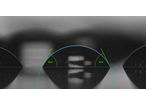
mars 30, 2016
AnalyzersHamburg, March 30, 2016 – KRÜSS GmbH will be exhibiting its new foam analysis instrument, the Ross Miles Foam Analyzer – RMFA, at analytica 2016 in Munich. The RMFA is the world’s first instrument for measuring foam height electronically according to the ASTM D 1173 standard, which is commonly referred to for investigating the foamability of foam-forming substances. Measurements with the RMFA are distinguished by high repeatability, large sample throughput and convenient data handling.
For measurements carried out in accordance with ASTM D 1173, the foam-forming solution is presented in a high, cylindrical receiver vessel with standard dimensions. A second quantity of the same solution is introduced from above by means of a likewise standardized reservoir. This passes through the column and forms foam as a result of the turbulence on mixing with the receiving phase. The foam height is measured as soon as the reservoir is empty and also after 60, 180 and 300 seconds. Up to now, the height and time have had to be recorded manually. Results were therefore dependent on the user and were subject to a corresponding uncertainty. With the RMFA, this belongs to the past.
Repeatable measurements – electronically and exactly to the normThe RMFA integrates the standardized vessels according to ASTM D 1173 in a newly developed measuring device for electronic height measurement. An LED bar and a sensor bar are fitted along the easy-to-insert intake vessel. The foam height is detected based on the difference in brightness at the foam-air boundary – a measuring method which KRÜSS also uses successfully in the Dynamic Foam Analyzer – DFA100.
The electronic height detection ensures considerably improved repeatability of the measurement and, with a resolution of 0.4 mm, achieves a previously unattainable precision. The initial foam height measurement does not have to be manually coordinated with the discharge of the reservoir solution. Instead, it corresponds to the electronically detected time at which the maximum foam height is registered. The other measurement times are also adhered to exactly. As well as the foam height, the instrument also records the height of the liquid. In this way, the raw data document whether the filling level specified in the norm has been accurately maintained.
As well as improved reproducibility and accuracy, electronic data measurement also saves a great deal of time, as the measurement no longer has to be followed live. The user therefore gains five minutes with every foam analysis, which he can use to prepare the next surfactant solution, for example.
Easy-to-use software with clear data processingThe RMFA is used with KRÜSS‘s universal ADVANCE software, which combines a workflow-oriented user interface with intuitive operation and appealing design. New measurements are set up with just one click from a measurement template which has been specifically created for analyses in compliance with the standard. After starting, ADVANCE records data for the whole transient behavior of the foam and liquid height. The Ross-Miles values are automatically singled out together with additional information relating to decay behavior and drainage. The results and raw data curves of any measurements can be displayed in common tables and charts with just a few clicks. As ASTM D 1173 recommends measurements of different surfactant concentrations, this rapid comparison of results is also ideally oriented to the standard.
KRÜSS will be showing the RMFA to interested exhibition visitors at analytica from May 10 to 13 in Munich (Hall A1, Booth 311).
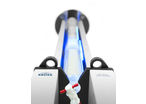
mars 10, 2016
AnalyzersHamburg, March 10, 2016 – With the Liquid Needle dosing technique, KRÜSS GmbH is since recently using a new method of drop positioning for measuring static contact angle. The pressure-based method significantly accelerates the dosing process compared with classic needle dosing. Here, dosing units arranged in parallel produce two drops at the same time enabling measurements of the surface free energy to be carried out within one second. A current scientific study in the journal Colloid and Polymer Science verifies that contact angles are measured accurately in spite of this high speed.
During the study, contact angles were measured on 14 different materials with the new pressure dosing method and the classic needle dosing technique. With a wide range of hydrophobic and hydrophilic, rough and smooth as well as chemically pure and technical surfaces, the investigation covers all practical cases. The results of the scientifically reviewed publication show without exception a good accord between the contact angle results of the two dosing methods.
Alternatives to needle dosing have previously failed due to the region outside the contact area of the drop being pre-wetted as the dynamics were too high. This falsified the contact angle resulting in values which were too small. In contrast, with the KRÜSS Liquid Needle method, drops are formed in a controlled manner and with low dynamics with the help of a continuous jet. The jet is so thin compared with the final drop size that the contact area does not spread to any greater extent than with needle dosing. This is clearly shown by the results of the study.
Both techniques are therefore basically distinguished by careful dosing. However, this is not always the case with classic needle dosing. The user can inadvertently increase the dynamics and thus falsify the value by an unsuitable choice of depositing speed or dosing distance. This is ruled out technically with the new dosing method. The Liquid Needle is also particularly beneficial with liquid-repellent samples. While smaller drops with needle dosing are difficult to deposit on such hard-to-wet materials, dosing with the Liquid Needle presents no difficulties.
Overall, the study shows that the Liquid Needle combines speed with high accuracy, reliably prevents unwanted pre-wetting, and furthermore enormously simplifies dosing on liquid-repellent samples. So far, KRÜSS is using the new dosing technique in the mobile test instrument Mobile Surface Analyzer – MSA and making it available for all stationary contact angle measuring instruments.
Literature: Ming Jin, Raymond Sanedrin, Daniel Frese, Carsten Scheithauer, Thomas Willers: Replacing the solid needle by a liquid one when measuring static and advancing contact angles. Colloid and Polymer Science 294(4), 657-665, DOI 10.1007/s00396-015-3823-1 (2016).
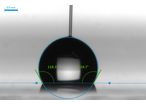
mai 21, 2015
AnalyzersHamburg, May 21st, 2015 – KRÜSS GmbH will be presenting its latest development, the Spinning Drop Tensiometer – SDT, at the ACHEMA 2015. The instrument measures interfacial tension with a high degree of accuracy and a particularly wide measuring range. The SDT is the ideal solution for the quality control and development of emulsions and surfactants thanks to its enormous bandwidth, low number of samples and simple handling during preparation. Exact capture of extremely low interfacial tensions also makes the SDT an instrument particularly well-suited for analyzing the interfacial behavior of mini-emulsions and micro-emulsions, for example for tertiary oil recovery or the pharmaceutical branch.
Exact rotation and image evaluationWith the spinning drop method, measurement of the interfacial tension is carried out by analyzing the video image of a drop surrounded by fluid in a rotating capillary. The accuracy of the video analysis and the rotational speed are decisive for the precision of the spinning drop method. That is why a high-resolution USB3 camera and an exactly controlled precision motor with excellent speed constancy are among the most important components of the SDT, combined with the intelligent and robust image evaluation algorithms of the software ADVANCE.
In addition to the standard Vonnegut method, the ADVANCE software’s spectrum of methods also encompasses an evaluation of the drop shape in accordance with Young-Laplace. This makes it possible to work at a slower rotational speed and so expands the range of the instrument allowing easy measurement of high interfacial tensions. A further advantage of this method lies in its robustness.
Ergonomically designed, safety-ensuring housingCompletely novel in respect to the spinning drop technique is that all components, including the rotating capillary, are enclosed in a sturdy, closed housing. This virtually eliminates the risk of injury while the design with its clearly highlighted control elements makes working with the instrument very easy. The tilting and the camera position are motor-controlled while the camera itself is protected by a special recess that accommodates it in its park position.
Innovations for speedy sample preparationOne of outstanding features of the SDT lies in the especially simple procedure for changing the samples. The novel concept for preparing the capillary, for which KRÜSS has filed two patents, significantly reduces the often laborious preparation otherwise involved in a spinning drop measurement. It also abolishes the need of regularly changing a septum normally required. The capillary is first filled with surrounding liquid while dismounted. Its specially shaped cap also serves as a holder for the drop liquid which enters the capillary when the cap is closed. The capillary is then placed in its holder with just one simple click.
Efficient and flexible temperature controlThe speedy capillary changeover is achieved not least by the forgoing of a liquid temperature control, which at the same time saves the need for an additional thermostat. The integrated electric heater controls the target temperature quickly and accurately and is characterized by its high temperature stability. A cryostat can also be connected for analyses carried out at below room temperature. An accurate infrared sensor measures the temperature contactless and reproduces the thermal conditions very close to the drop.
Software with a new workflow-orientated operating conceptThe ADVANCE software focuses on simple automation and intuitive operability. The relevant functions for each particular step are arranged in tiles which display all elements necessary in the context on the screen. By forgoing the use of menus and pop-ups, ADVANCE saves any unnecessary clicks and time-consuming searches for hidden elements.
Measuring with the Spinning Drop Tensiometer – SDT is completely software-controlled and uses prepared and easily adaptable procedure. ADVANCE automatically assigns every measured value to its associated drop image and presents it in the video window. There is no need for the laborious saving, loading and management of image files.
KRÜSS will be demonstrating the Spinning Drop Tensiometer – SDT with its ADVANCE software for visitors at the ACHEMA 2015 on stand F77 in hall 4.1.
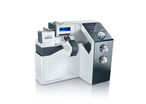
mars 25, 2015
Analyzers
Hamburg, March 25th, 2015 – KRÜSS GmbH will be at the 2015 Hannover Messe fair introducing the public to the Large Surface Analyzer – LSA, a positioning robot combined with the Mobile Surface Analyzer – MSA contact angle measuring instrument. The system performs fast, fully automated surface free energy (SFE) determinations at freely defined positions on large samples. Because it is easy to operate and program, this robot-assisted, scientific surface analysis system is particularly well suited to quality assurance applications on cleaned, pretreated or coated materials.
The MSA, with its ability to take measurements in less than one second, is the fastest mobile instrument on the market for determining surface free energy with two test liquids. It does this by means of a non-contact pressure dosing system that places two drops on the sample, followed by an automatic image analysis of each drop including contact angle measurement and SFE calculation. With our Large Surface Analyzer – LSA, these features are enhanced using the quick and precise positioning of the instrument between measurements.
The Large Surface Analyzer – LSA, which KRÜSS will present in the Surface Technology area of the 2015 Hannover Messe, has one vertical and two horizontal axes and is designed to handle sample sizes of 495 × 565 mm. A second standard model allows operators to position the instrument as desired on a surface of 2900 × 3150 mm. Upon request, customized systems in other sizes are possible. KRÜSS will be demonstrating the system to any interested visitors at booth G29, hall 3.
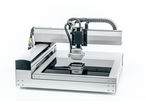
Buyers
Find your suppliers Complete your request and let our teams find you the best deals available.Suppliers
Find your future clients List your products and services to enhance your web presence and receive qualified enquiries.